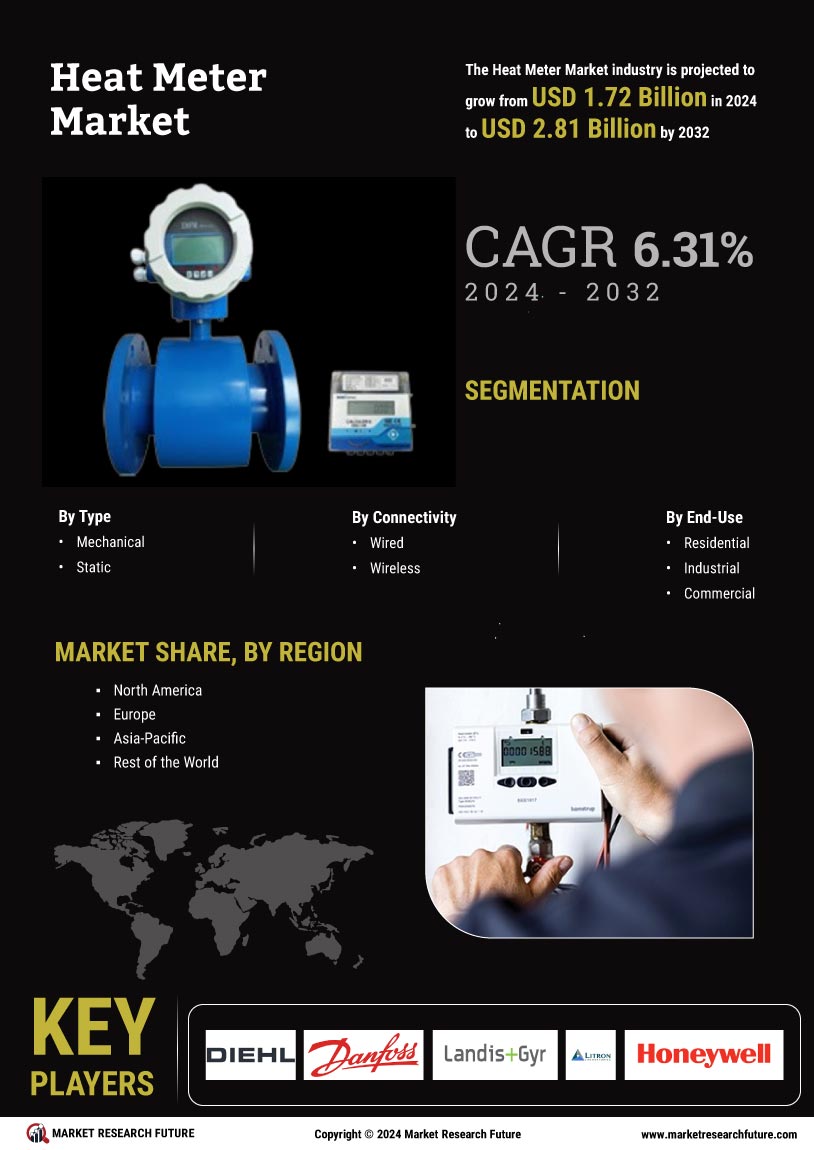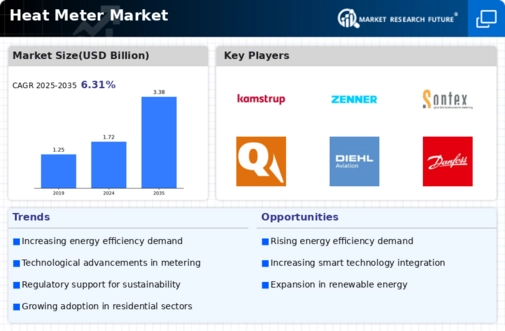Market Growth Projections
The Global Heat Meter Market Industry is poised for substantial growth in the coming years. Projections indicate that the market will reach 1.72 USD Billion in 2024 and is expected to grow to 3.38 USD Billion by 2035. This growth trajectory suggests a compound annual growth rate of 6.32% from 2025 to 2035. Such figures reflect the increasing demand for energy-efficient solutions and the adoption of advanced metering technologies across various sectors. The market's expansion is likely to be driven by factors such as urbanization, technological advancements, and government initiatives aimed at promoting energy efficiency.
Growing Demand for Energy Efficiency
The Global Heat Meter Market Industry is experiencing a notable surge in demand for energy-efficient solutions. Governments worldwide are implementing stringent regulations aimed at reducing energy consumption and greenhouse gas emissions. For instance, the European Union has set ambitious targets for energy efficiency, which is driving the adoption of heat meters in residential and commercial buildings. This trend is expected to contribute to the market's growth, with projections indicating that the market will reach 1.72 USD Billion in 2024. The increasing awareness of energy conservation among consumers further supports this trend, as individuals seek to optimize their energy usage.
Government Initiatives and Incentives
Government initiatives play a crucial role in shaping the Global Heat Meter Market Industry. Various countries are introducing policies and incentives to promote the adoption of heat meters as part of their energy efficiency strategies. For example, subsidies and tax incentives for energy-efficient technologies encourage consumers and businesses to invest in heat metering solutions. These initiatives not only facilitate market growth but also align with global sustainability goals. As governments continue to prioritize energy efficiency, the market is expected to expand, with a projected compound annual growth rate of 6.32% from 2025 to 2035.
Increasing Awareness of Environmental Impact
The growing awareness of environmental issues is significantly influencing the Global Heat Meter Market Industry. Consumers are becoming more conscious of their carbon footprint and are actively seeking ways to reduce energy consumption. This shift in consumer behavior is driving the demand for heat meters, which enable users to monitor and manage their energy usage effectively. As individuals and organizations strive to adopt more sustainable practices, the market is likely to benefit from this heightened awareness. The emphasis on reducing greenhouse gas emissions aligns with global efforts to combat climate change, further propelling the adoption of heat metering solutions.
Technological Advancements in Metering Solutions
Technological innovations are transforming the Global Heat Meter Market Industry, enhancing the accuracy and efficiency of heat measurement. The integration of smart technologies, such as IoT-enabled heat meters, allows for real-time monitoring and data analytics. This advancement not only improves operational efficiency but also provides consumers with valuable insights into their energy consumption patterns. As a result, the market is likely to witness a significant uptick in adoption rates. By 2035, the market is projected to grow to 3.38 USD Billion, reflecting the increasing reliance on advanced metering solutions to meet energy management needs.
Rising Urbanization and Infrastructure Development
Urbanization is a key driver of the Global Heat Meter Market Industry, as cities expand and infrastructure development accelerates. The growing population in urban areas necessitates efficient heating solutions to meet the rising demand for residential and commercial heating. Governments are investing in modernizing heating infrastructure, which includes the installation of heat meters to optimize energy distribution. This trend is particularly evident in developing countries, where urbanization rates are high. The market's growth is further supported by the increasing focus on sustainable urban development, which emphasizes energy efficiency and resource management.


















Leave a Comment